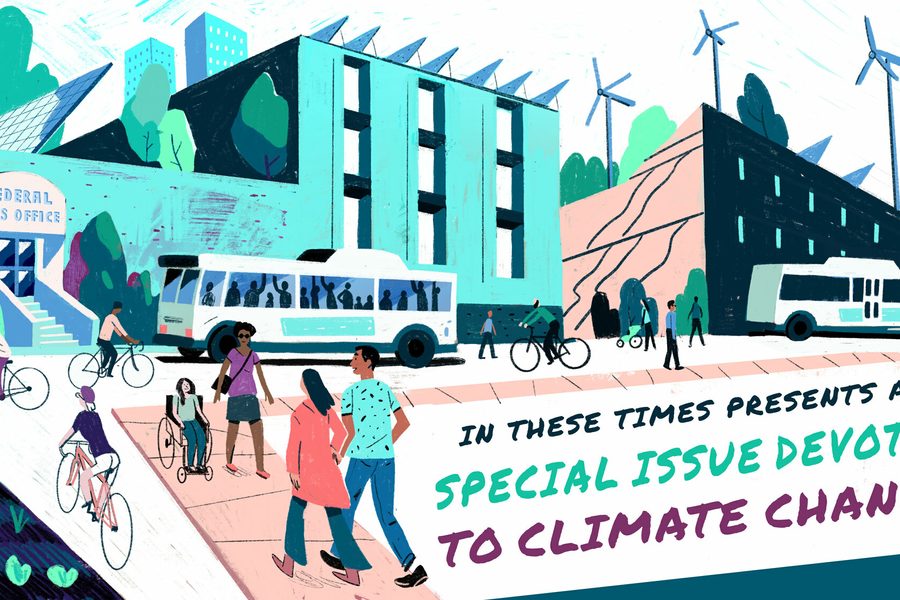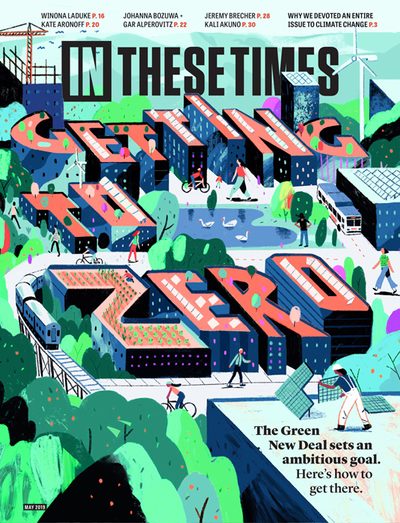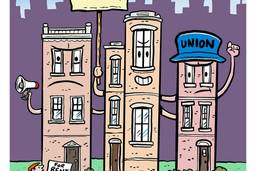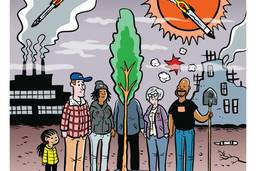Why We Devoted an Entire Issue to Climate Change
The most ambitious climate proposal ever seen on Capitol Hill is a call to action. We need to answer the call.
Dayton Martindale

The idea for this special issue began almost a year ago from a place of despair: Not only were global emissions rising and Republicans in power, but climate change was an afterthought even for most progressives. A special issue, I thought, could serve as a cry from the wilderness, lifting up the work of the climate movement.
In the past few months, global warming has come in from the cold. In October 2018, a UN report caught public attention with a meme-able goal: Cut global emissions roughly in half by 2030 — or face catastrophe. Oh, it began to sink in. This is urgent.
A month later, Rep. Alexandria Ocasio-Cortez (D-N.Y.) joined Justice Democrats and the youth-led Sunrise Movement in a sit-in of House Speaker Nancy Pelosi’s (D-Calif.) office to advocate something called the Green New Deal. “We have 12 years,” one sign read. “What is your plan?”
An outline for a plan found its way into Congress in February through a brief document introduced by Ocasio-Cortez and Sen. Ed Markey (D-Mass.). The Green New Deal resolution calls for a 10-year transition to zero-emission electricity (and eventually zero-emission everything), an infrastructure investment plan and a jobs guarantee, in addition to other social and environmental justice priorities. The plan is likely the most ambitious climate proposal ever seen on Capitol Hill, and has massive public support and the backing of several presidential hopefuls. So, of course, it drew backlash.
Pelosi dismissed it as the “Green Dream, or whatever they call it” and Sen. Dianne Feinstein (D-Calif.) seized the moment to insult some pro-Green New Deal children—and that’s just the Democrats. Pundits from the Washington Post to Bloomberg have deemed the proposal unrealistic and offered “pragmatic” alternatives. Republican Rep. Matt Gaetz (Fla.) drafted a “Green Real Deal,” which calls for “robust” reductions in emissions but offers no specific goals.
It’s not that alternative plans are without merit. But they all seek to narrow the scope of Ocasio-Cortez’s proposal, removing precisely what makes it so powerful.
The Green New Deal is expansive because the problem is expansive, demanding the eradication of entire industries, from fossil fuels to industrial meat, and the wholesale transformation of others. To get there, we must plan a just transition for workers, develop new local and regional transit networks, retrofit and build new efficient housing, and radically alter our industrial production processes — all while learning to cope with ever-greater droughts, hurricanes, heat waves, floods, disease outbreaks, resource conflicts and species extinctions. Meanwhile, immensely powerful corporations are hell-bent on stopping any change to the system.
Indeed, “climate change appears to be not merely one challenge among many,” writes David Wallace-Wells in his new book, The Uninhabitable Earth, “but the all-encompassing stage on which all those challenges will be met.”
What separates the Green New Deal from other climate plans is the recognition that we need to think about the whole stage. We must reach across movements to build a maximally ambitious Green New Deal platform on the federal, state, local and even international levels. We must then pressure our elected officials to support it, and make sure anyone elected in November and beyond, from school board to Senate, is behind our agenda.
Climate action can start anywhere, from planting an organic neighborhood garden to pushing for energy efficiency at your workplace, from fighting for citywide transit to occupying a coal plant, to opening your home to a refugee.
There is something for everyone — and that’s just who it will take.
You can see the table of contents for the climate issue here.
Dayton Martindale is a freelance writer and former associate editor at In These Times. His work has also appeared in Boston Review, Earth Island Journal, Harbinger and The Next System Project. Follow him on Twitter: @DaytonRMartind.









